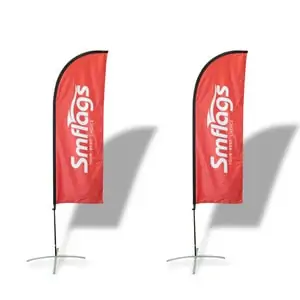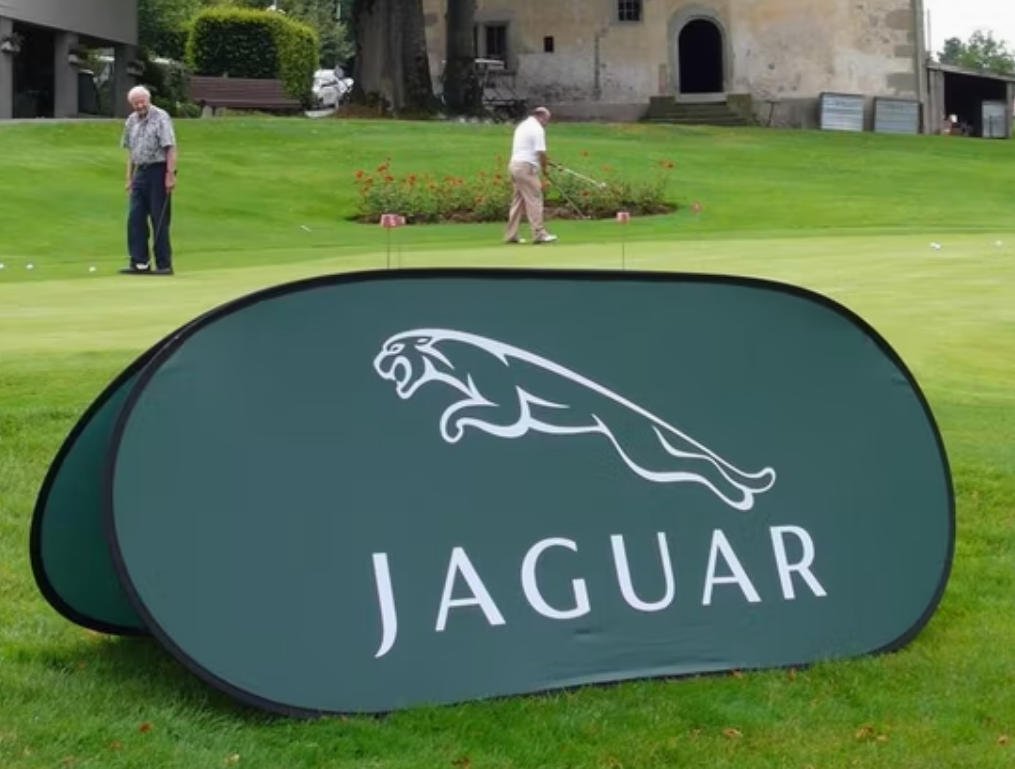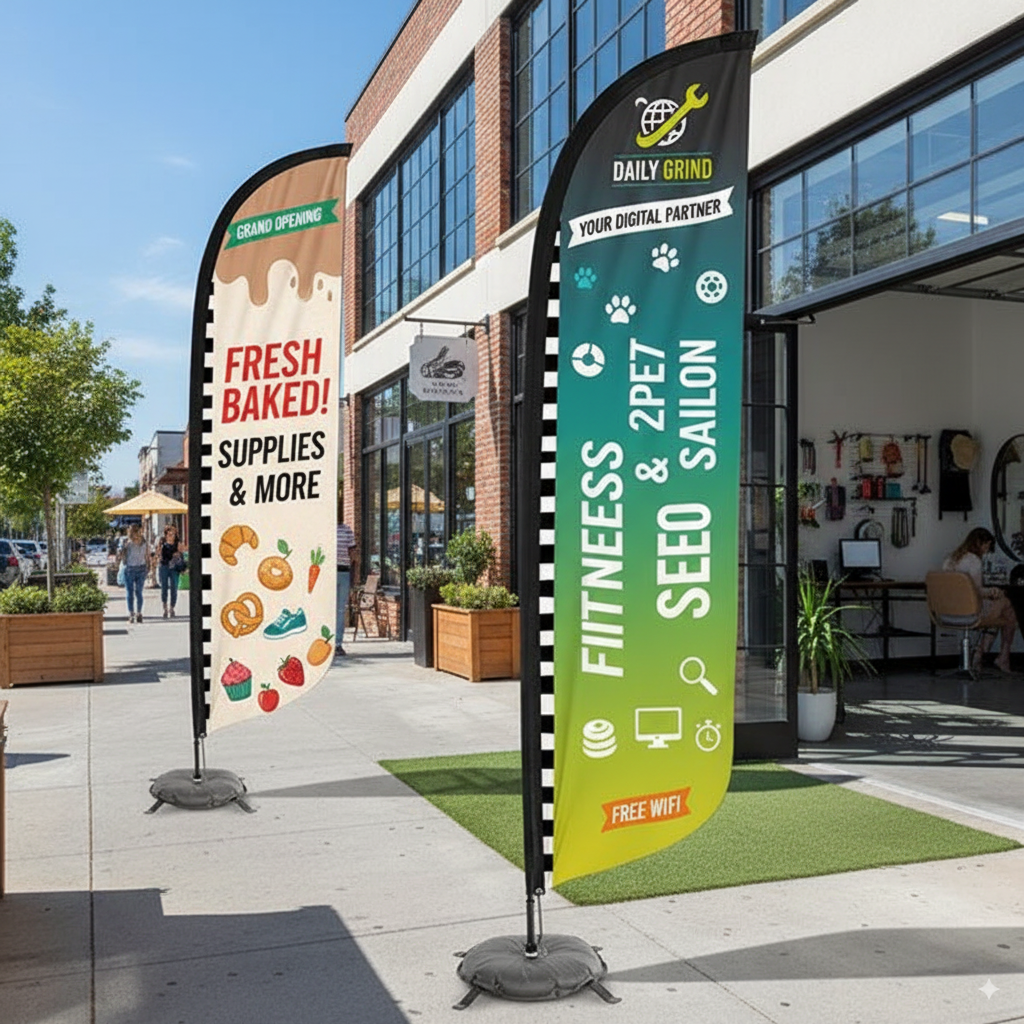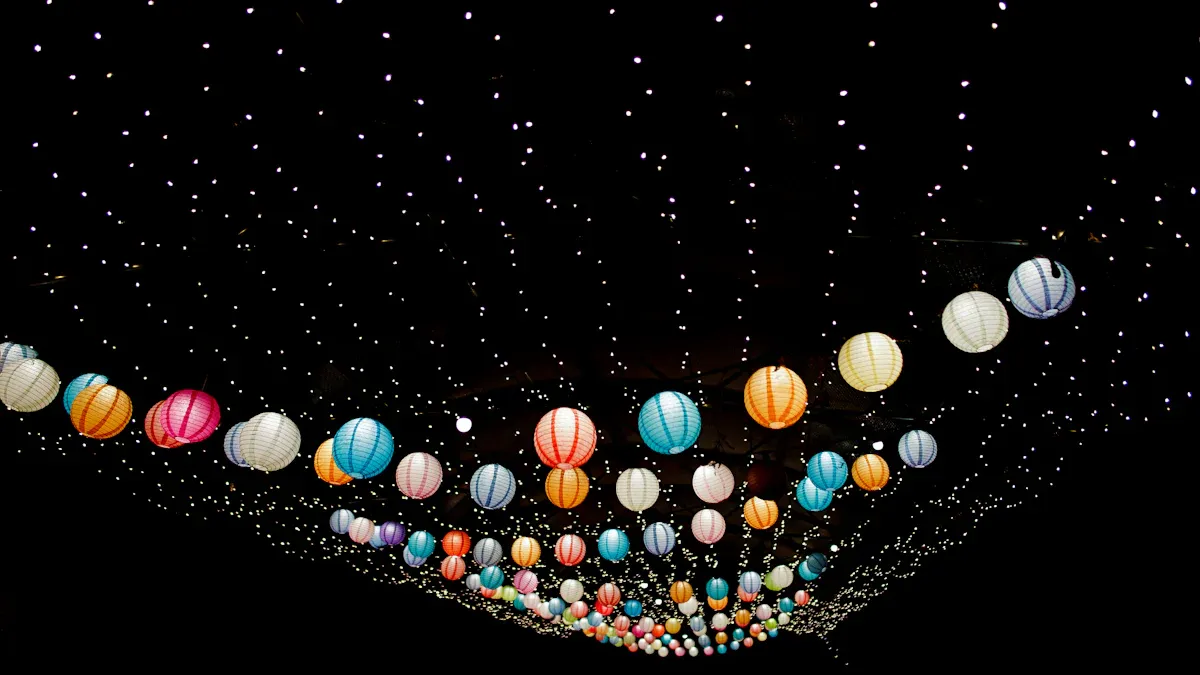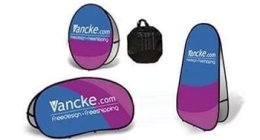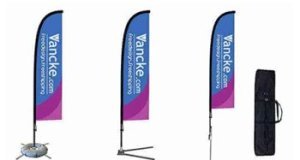
[lwptoc]
Progression in science and technology has dramatically impacted all walks of life, including health, innovations, and printing niches. Thanks to science, there have been great advances in practically everything around us.
It has for example changed the original heat transfer printing style and option. It is now called digital heat transfer printing and is a more convenient and better printing option.
Besides, it’s so easy to use and comes with multiple benefits. Read on to learn all about digital heat transfer printing, and why it’s so popular with feather banners.
What is digital heat transfer printing?
Heat transfer decorating comprises two major processes separating printing from decorating. Heat transfer printing has been around for some time. Unfortunately, it hasn’t received the recognition it requires.
Screen or offset printed heat transfer decals are more well-known amongst the masses. They are available only for printing in high qualities ranging from hundreds to thousands of units. Besides, they are usually produced in Asia.
Digital heat transfer technology provides a solution by providing a more localized but personalized feather flag printing solution for both small to medium printing quantities. Besides, the prints are made using a high print resolution and eco-friendly technologies.
A high-quality inkjet printer prints the images designed through a computer onto heat transfer paper. Many countries have adopted this printing methodology for printing banners like Korea, the USA, Italy, Switzerland, and China.
China is now the biggest processing market for digital heat transfer printing, especially on banners, thanks to flag manufacturers like vancke.com.
The process
Like all printing processes, digital heat transfer printing on feather flags begins with the client sending their desired artwork and content to the feather flag manufacturer.
The file is first checked and optimized for the printing press. This is of course if you have a design ready, and know what you want to print on the banners. Don’t worry if you don’t have a design ready.
You can alternatively ask the feather flag manufacturer to come up with a design for your feather flag. Most manufacturers like vancke.com have a large collection of templates for you to use for your design. You just have to decide on the color combination.
There’s another option available if you don’t have the time or knack to select colors and build your own design using a template. Feather flag manufacturing companies have their in-house team of designers who will develop your strategy based on your specifications.
Thanks to the help of modern and updated equipment, you can expect a print quality of up to 1,200 dpi on your feather flags. So your prints will all have nice gradients, delicate textures, and even tiny but legible text.
It’s after the prepress procedure that the artwork files are printed onto a transfer material. Some manufacturers also include an additional step in the printing process.
Here an adhesive is added to the transfer. This adhesive helps increase the later adhesion to the material they will be applied.
This comes in handy while printing on other things like mugs and wooden pieces. Or it can also basically be used to print on all types of plastics and non-plastic materials like wood, glass, and metals.
There are also printing technologies that help produce safe and eco-friendly decals. They are referred to as eco-friendly because they don’t contain any volatile organic compounds or UV curing monomers.
With the transfers ready, it’s now time to start printing your feather flags.
Feather flag manufacturers like vancke.com start by inserting the transfer into a heat transfer machine. There are different types of heat transfer machines used for this purpose. Some of them are cheap and easily hand-fed, while others are high-quality equipment with additional functionalities.
In the case of high-quality machines, an optical image registration system positions the transfer on top of the feather flag. Once in position, a hot rubber-coated plate or roller presses the print against the flag.
The heat and pressure in the plate or roller activate the decal, which adheres to the banner’s surface. The carrier material automatically peels off after cooling down for a while and leaves you with an attractive flag.
Though the procedure may seem to be something lengthy, it usually takes no more than two seconds.
And this is a very significant plus point because there is no need for any further drying or curing.
That is why feather flag manufacturers can offer so fast turnaround times to print your banners! Besides, there is no worry about problems like ink migration and the elimination of solvent odors while decorating flags with heat-transfer decals.

Features of digital heat transfer printing
Digital heat transfer printing is most popular in the personalization market. Thanks to its technical adaptabilities and economical printing rates, it is a more cost-effective option for the small-scale production of personalized items like feather flags.
Besides, it produces better printing quality images than its predecessor, traditional heat transfer printing. And it is the main reason why this printing style has gained universal recognition and acceptance in just a few years.
The highlighted features of this printing technology are:
- The resulting images come with more vivid color and better composition
- Environmental friendly prints in compliance with Green Print standards
Benefits of digital heat transfer printing on feather flags
There are various benefits to using digital heat transfer printing on banners like:
- Unique process separating printing from decorating.
- Feather flag manufacturers take care of everything properly, from pre-pressing to procuring raw materials, thus focusing on essential tasks.
- Produces exceptional print quality printable new ideas and designs
- Eco-friendly in design, with a safe and easy-to-run application process.
- No need for any long training
- Works on a plug-and-play technology like most modern trends and requirements
- Low investment technology that saves the manufacturer and thus your money. Well-built heat transfer machines need only changing of their transfer roller or plate once or twice a year.
- No mess like ink storage, chemical waste, color mixing, smell, or UV radiation
How to take care of digital heat transfer printed banners
Here’s how you can prolong the life and use of your digital heat transfer printed feather flags:
- Do not use any detergent with bleacher components for cleaning purposes
- Wash with water with a temperature below 40 degrees
- Do not use the washer, and air-dry it with minimal sun exposure
- Use only medium steam irons on dried banners as high steam iron may destroy the fibrous tissue. Hanging the feather flag to dry or spreading flat on a surface helps retain the feather shape.
- Keep the banners in their accompanying carrying bag when not in use.
- It is better to avoid keeping the feather flags in direct sunlight or the rain for long periods of time.

Digital heat transfer printing vs. screen printing technology
Like everything else, digital heat transfer printing is the perfect choice for some printing applications. But there are also some situations where it’s sometimes better not used. That’s why it’s better to know and understand the different printing technologies before deciding on one, specifically screen printing.
What is screen printing?
Screen printing involves using a stencil and layers of ink applied to the printing surface, one at a time. It gets its name because a separate screen is used for adding each new color.
Screen printing is a versatile printing technique used for printing on various materials like plastic, latex, and textiles. As these surfaces do not need printing under pressure, it’s popularly used for printing on products like clothing, balloons, and wallpaper.
Differences between digital heat transfer printing and screen printing
History
Screen printing has its roots back to Egyptian times with stenciling and later in China, where ink was forced through silk fabric to create images. Ancient artists stretched silk fabric across frames and poured hot beeswax into it. It was only in the 1880s that screen printing got famous as a commercial process for fabric decoration.
Digital heat transfer printing is a relatively new printing technology, where it was first introduced in the early 1990s. The technology has evolved with time, and now possible to print digital prints in seconds.
Cost
If compared to screen or pad printing, digital heat transfer printing can print 100,000 prints of the same design. In short, these options are better for high-value printing. Though the initial setup fee is expensive, it works out better if you need more copies printed.
You do not even have to pay any extra fees as long as the artwork is ready and your design does not change much.
However, this is not the case in screen printing. As a new screen is required for each new color in screen printing, additional colors will cost you.
Mass production
Digital heat transfer printing is cost-effective and flexible, making it a better option for printing lower banner volumes. They are perfect if you want only 100 individually personalized banners to promote your upcoming shop opening.
Besides, while black and white digital printing is an option, there’s no difference if you want one or a hundred colors. You spend the same amount.
However, it is generally not that cost-effective an option if you’re going to personalize many banners using digital heat transfer printing.
Print look and finish
Traditional technologies are also a better option for single-or two-color print jobs that do not require any photorealistic 1,200 dpi print resolution. However, traditional screen printing cannot address the color transition between two colors, like printing trade markers and feather flags.
Screen printing is better if you’re looking for a unique finish, like something authentic, retro, or a softer look. Digital heat transfer printing is better if you look for a modern, fresh, and crisp finish.
Quality
Screen printing prints have a more vibrant finish, especially while printing on dark surfaces. However, digital distribution is better for detailed work than its thinner ink layers, producing a more precise final print.
Design placement
Screen printing makes it convenient to move artwork and print at different angles and positions. However, digital heat transfer printing offers greater flexibility and changes if required.
It is just what you need for personalizing feather flags.
Color bleeding
There is the risk of colors bleeding into one another in the case of screen printing. However, in some cases, especially where you want to create this look, this can be a positive.
While there is no risk of any bleeding in the case of digital heat transfer prints, there is a chance of facing color matching errors. In other words, sometimes the colors may appear to be slightly different on your computer screen and later when printed.
Speed
Digital heat transfer printing is quick. That is why you can expect your feather flags to reach you quickly and on time. They are the perfect option for printing banners when you are running on a tight schedule.
Conclusion
Now that you know more about the printing process used for feather flags, you know it’s a worthwhile investment. As long as you dismantle and store the feather flags in its accompanying carrying bag after use, the banners will serve you for a long time to come.
The only thing you need to remember is to place your order well in advance. It’s no doubt companies like vancke.com will print your banners in a hurry. However, if you place your order too close to your opening or event date, there is the risk of your not receiving the banners on time.
And for best effects, order and print a few banners. You can place them at different spots like outside malls and gymnasiums, parking lots, or in front of your open house.
Tall banners are better placed at spots where you want people to be able to see it from afar, like at traffic signals. The shorter flags are better placed in nearby and visible spots, like in front of your shop.
